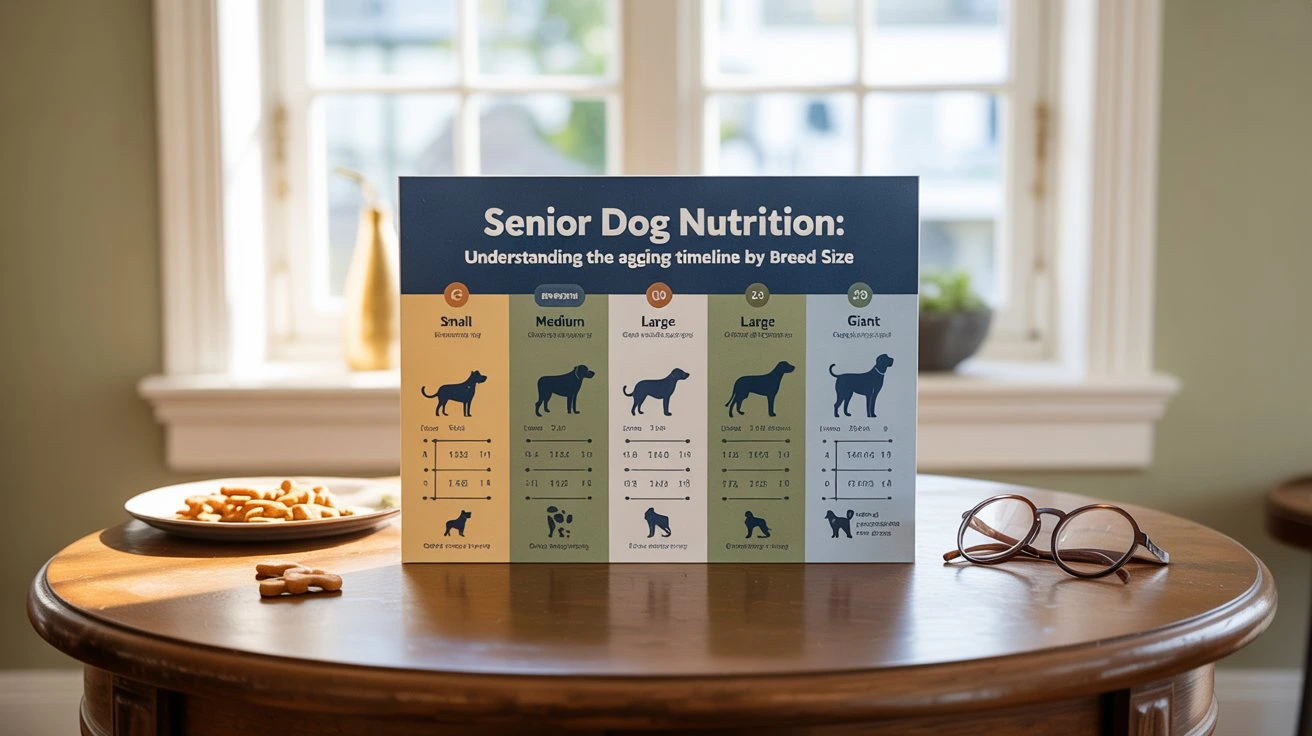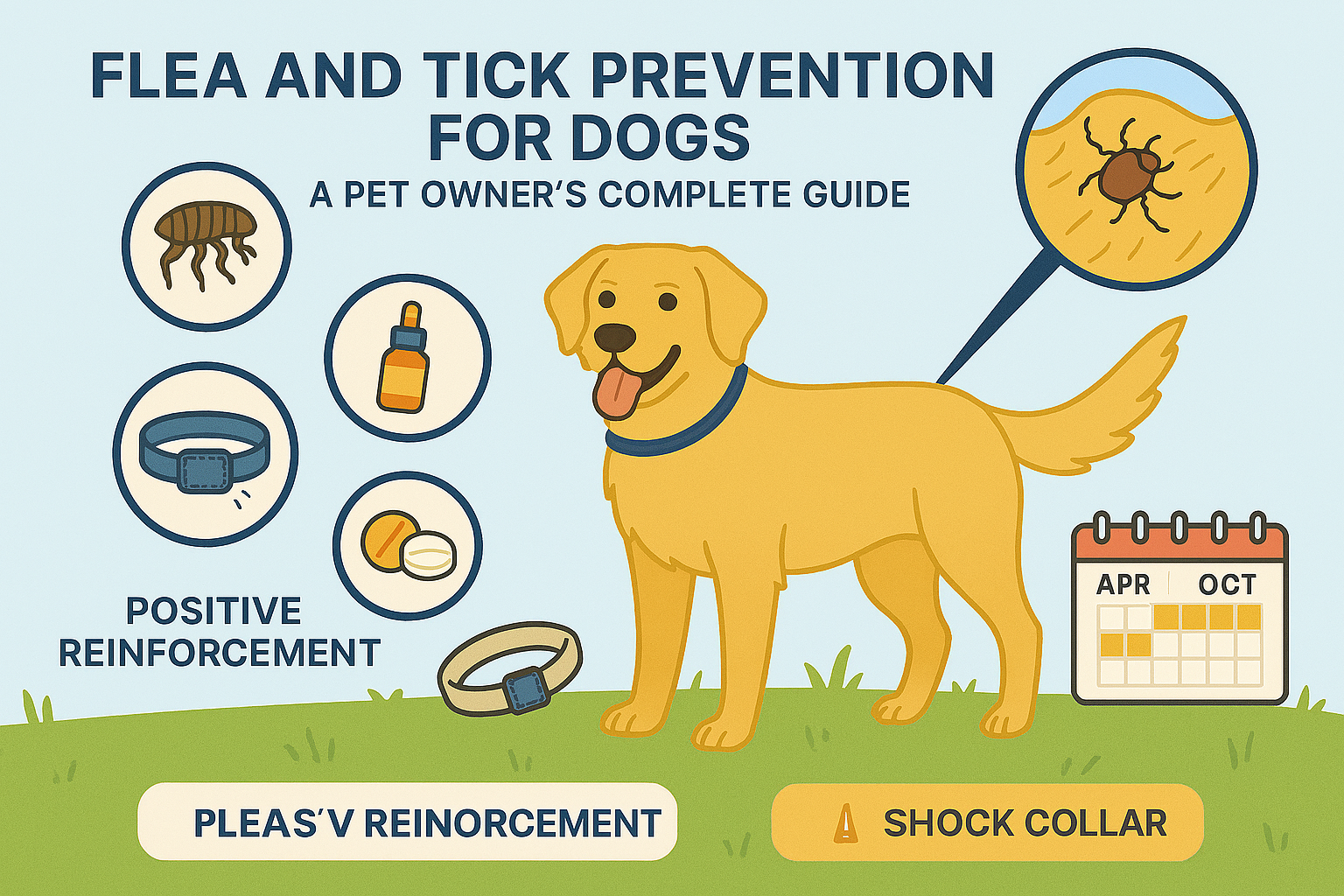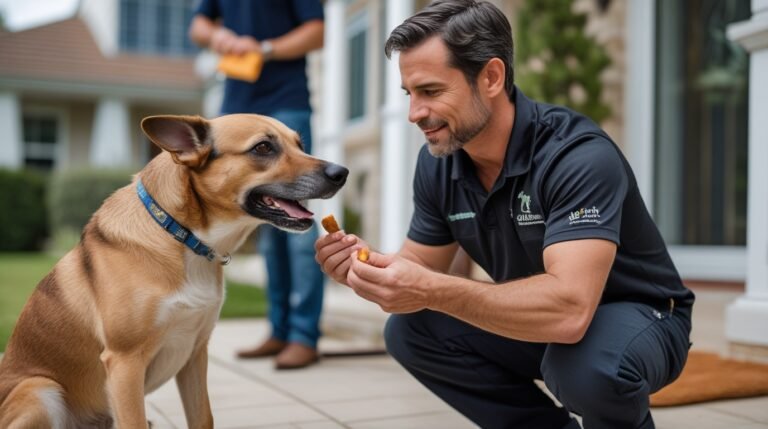Senior Dog Nutrition: An Expert’s Guide to Feeding Your Aging Friend
A Comprehensive Interview with Dr. Sarah Mitchell, DVM, PhD in Animal Nutrition
Meet Our Expert: Dr. Sarah Mitchell is a board-certified veterinary nutritionist with over 15 years of experience specializing in senior dog nutrition. She holds a PhD in Animal Nutrition from Cornell University and currently serves as the Director of Clinical Nutrition at the Metropolitan Animal Hospital. Dr. Mitchell has authored numerous research papers on aging canine dietary requirements and consulted for leading pet food manufacturers.
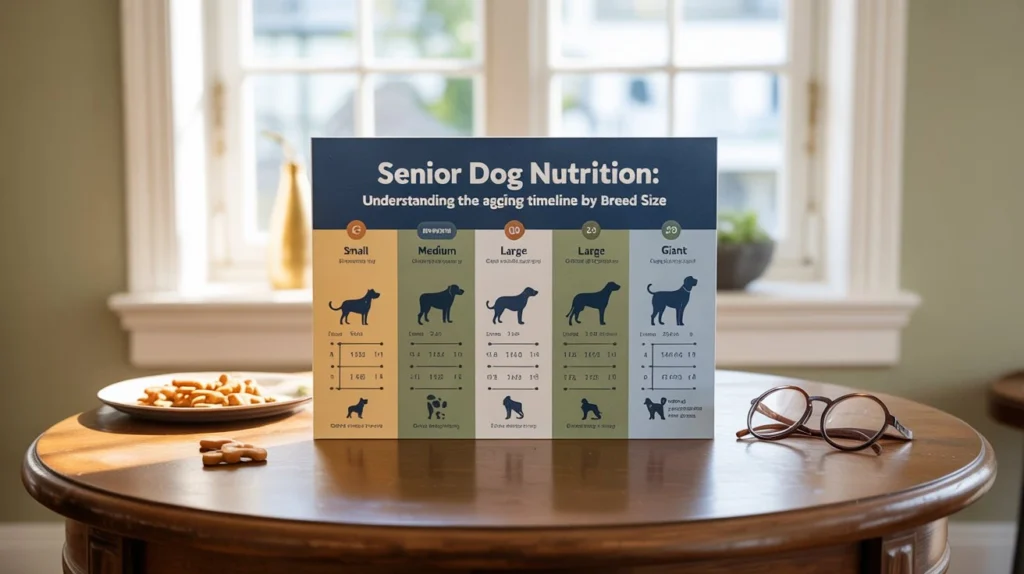
Understanding When Your Dog Becomes a “Senior”
Q: Dr. Mitchell, at what age should dog owners start considering their pet a “senior dog,” and does this vary by breed?
Dr. Mitchell: This is one of the most common questions I receive, and the answer isn’t as straightforward as many pet owners expect. Generally, we consider dogs to be seniors when they’ve reached approximately 75% of their expected lifespan. For smaller breeds like Chihuahuas or Yorkshire Terriers, this typically occurs around 10-12 years of age, while larger breeds like Great Danes or Saint Bernards may be considered seniors as early as 6-7 years old.
The key factor here is that larger dogs tend to age more rapidly than smaller dogs. This phenomenon, known as the “rate of living theory,” suggests that larger animals have faster metabolic rates and shorter lifespans. However, it’s crucial to remember that every dog is an individual. I’ve seen 8-year-old German Shepherds showing clear signs of aging, while some 12-year-old Border Collies still have the energy of much younger dogs.
What matters most is recognizing the early signs of aging: decreased activity levels, changes in sleep patterns, mild stiffness after rest, or subtle changes in appetite. These indicators often appear before the chronological “senior” age and signal that it’s time to start thinking about adjusting their nutrition.
Key Nutritional Changes in Senior Dogs
Q: How do caloric and protein requirements change as dogs age, and why do these changes occur?
Dr. Mitchell: Senior dog nutrition requirements undergo significant changes that reflect the physiological alterations occurring in aging dogs. Let me break this down into the two main components you’ve asked about.
Caloric Requirements: Most senior dogs require 10-20% fewer calories than they did in their prime adult years. This reduction occurs because of decreased muscle mass, reduced activity levels, and a slower metabolic rate. However, this is where individualization becomes critical. Some senior dogs, particularly those with certain medical conditions or those who remain very active, may actually need more calories to maintain their body weight.
Protein Requirements: Contrary to outdated beliefs that senior dogs need less protein, current research shows they often need more high-quality protein than younger adults. As dogs age, they become less efficient at protein synthesis, meaning they need more dietary protein to maintain muscle mass. I typically recommend senior dog foods contain at least 25-28% protein on a dry matter basis, compared to 18-22% for adult maintenance diets.
The key is focusing on highly digestible, complete proteins from sources like chicken, fish, or egg. These proteins provide all essential amino acids while being gentle on the digestive system, which may become less efficient with age.
Top 5 Ingredients to Look for in Senior Dog Food
- High-quality animal protein (chicken, fish, lamb): Supports muscle maintenance and provides essential amino acids for aging bodies
- Omega-3 fatty acids (fish oil, flaxseed): Reduces inflammation and supports brain function, joint health, and coat quality
- Glucosamine and chondroitin: Natural compounds that support joint cartilage health and mobility in aging dogs
- Antioxidants (vitamins E, C, beta-carotene): Combat cellular damage from free radicals and support immune function
- Prebiotics and probiotics: Maintain digestive health and support the immune system, which can decline with age
Joint Health and Mobility Support Through Nutrition
Q: What role do supplements like glucosamine play in senior dog nutrition, and are they necessary for all aging dogs?
Dr. Mitchell: Joint health is one of the most significant concerns for senior dogs, and nutrition plays a crucial role in maintaining mobility and comfort. Glucosamine and chondroitin are the most well-researched supplements for joint health in dogs, and I consider them essential components of senior dog nutrition.
How They Work: Glucosamine is a natural compound that helps maintain cartilage structure and may stimulate cartilage repair. Chondroitin works synergistically with glucosamine to inhibit cartilage breakdown and reduce inflammation. Together, they help maintain the cushioning between joints that naturally deteriorates with age.
Dosage Considerations: I typically recommend 500-1000mg of glucosamine per 25 pounds of body weight, along with 200-400mg of chondroitin. However, these supplements work slowly – owners should expect to see improvements after 6-8 weeks of consistent supplementation.
Beyond Glucosamine: I also recommend omega-3 fatty acids, particularly EPA and DHA from fish oil, as they have powerful anti-inflammatory properties. MSM (methylsulfonylmethane) is another supplement I often suggest, as it can help reduce joint inflammation and improve mobility.
While not every senior dog will develop arthritis, I believe preventive supplementation is beneficial for most dogs over 7 years old, especially larger breeds that are predisposed to joint issues.
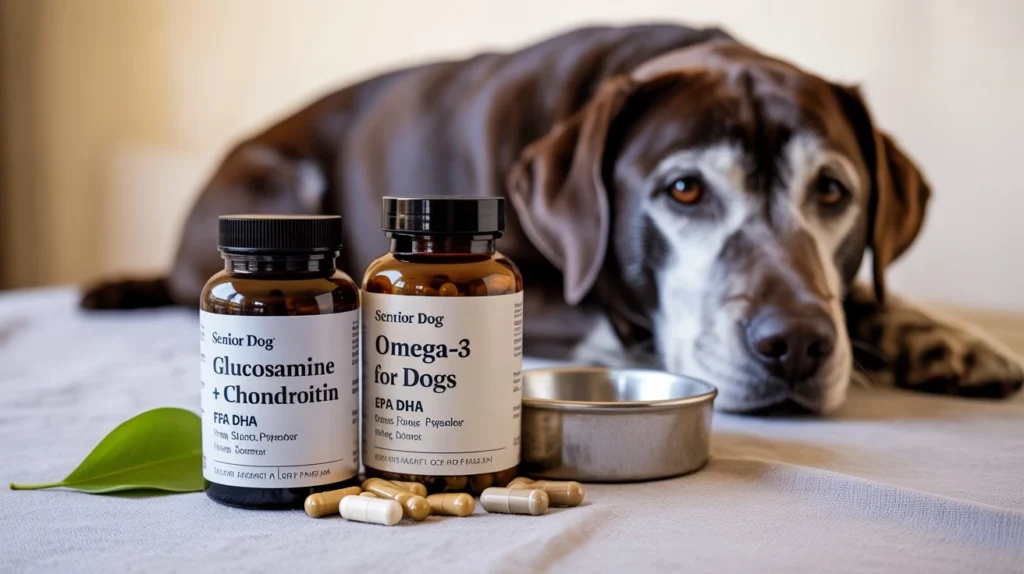
Managing Common Aging Issues Through Diet
Q: How should owners address appetite changes, weight management, and dental issues in senior dogs through their diet?
Dr. Mitchell: These three issues are interconnected and represent some of the most common challenges in senior dog nutrition. Let me address each one and how they relate to overall nutritional management.
Appetite Changes: Senior dogs may experience decreased appetite due to reduced sense of smell, dental pain, or underlying health issues. To combat this, I recommend warming food slightly to enhance aroma, adding low-sodium broth, or incorporating small amounts of tasty, healthy additions like cooked chicken or fish. Feeding smaller, more frequent meals can also help stimulate appetite without overwhelming the digestive system.
Weight Management: Both obesity and unintentional weight loss are concerns in senior dogs. For overweight seniors, I focus on high-protein, lower-calorie diets that preserve muscle mass while promoting fat loss. Increased fiber can help dogs feel full while consuming fewer calories. For underweight seniors, calorie-dense foods with high digestibility are key – think of foods with added healthy fats like fish oil or coconut oil.
Dental Health: Dental disease affects over 80% of dogs by age 3, and the problem only worsens with age. While wet food is often easier for dogs with dental pain to consume, don’t discount the mechanical cleaning action of appropriate dry kibble. I often recommend a combination approach: primarily wet food for nutrition and comfort, with some dental-specific dry treats or kibble for oral health maintenance.
Choosing the Best Food: What to Look for on the Label
Q: Is wet food better than dry food for senior dogs, and what should owners look for when reading pet food labels?
Dr. Mitchell: The wet versus dry food debate is nuanced, especially for senior dogs. Both have advantages, and the best choice often depends on your individual dog’s needs and health status.
Advantages of Wet Food for Seniors: Wet food provides higher moisture content, which is beneficial for senior dogs who may not drink enough water. It’s also easier to chew for dogs with dental issues, often more palatable for dogs with decreased appetite, and typically has higher protein content per serving. The softer texture is gentler on sensitive teeth and gums.
Advantages of Dry Food: Dry kibble is more economical, has a longer shelf life once opened, and can provide some mechanical cleaning action for teeth. Some senior-specific dry foods are formulated with smaller kibble size and enhanced palatability.
Label Reading Essentials: When evaluating any senior dog food, I teach owners to look for these key elements: the AAFCO statement confirming the food is “complete and balanced,” a named animal protein as the first ingredient, and an analysis showing at least 25% protein for most senior dogs. Avoid foods with excessive fillers like corn gluten meal or by-product meal as primary ingredients.
I often recommend a combination approach – primarily wet food for hydration and palatability, supplemented with some high-quality dry food for variety and dental benefits.
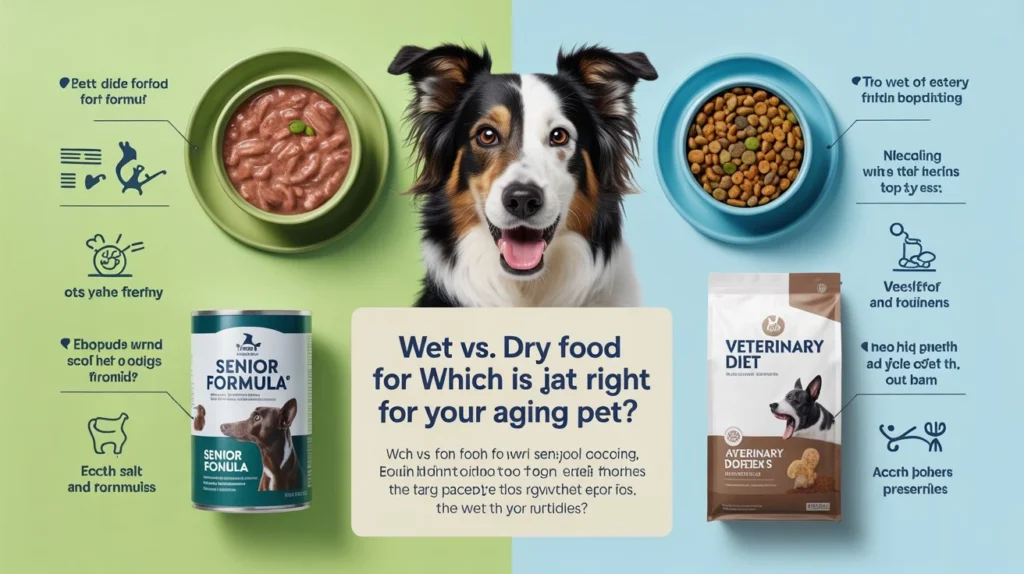
Addressing Specific Health Conditions
Q: How should diet be modified for senior dogs with common conditions like kidney disease, heart disease, or cognitive decline?
Dr. Mitchell: Senior dogs are unfortunately more susceptible to various health conditions, and nutrition plays a therapeutic role in managing these conditions. However, I must emphasize that any dietary changes for medical conditions should be made in consultation with a veterinarian.
Kidney Disease: This requires careful protein management – not necessarily restriction, but ensuring high-quality, highly digestible proteins that produce less waste. Phosphorus restriction is often necessary, and increased omega-3 fatty acids can help reduce inflammation. Adequate hydration becomes even more critical.
Heart Disease: Sodium restriction is typically the primary dietary modification, along with ensuring adequate taurine and L-carnitine levels to support heart muscle function. Maintaining lean body weight reduces strain on the cardiovascular system.
Cognitive Decline (Canine Cognitive Dysfunction): This is an area where nutrition can make a significant impact. I recommend diets rich in antioxidants, omega-3 fatty acids (especially DHA), and medium-chain triglycerides (MCTs). Some studies suggest that MCTs can provide an alternative energy source for aging brain cells.
There are also therapeutic diets specifically formulated for these conditions. While they may seem expensive, they’re often more cost-effective than trying to manage these conditions with regular food plus multiple supplements.
Important Note: For comprehensive information about overall canine health throughout all life stages, including preventive care and wellness strategies, I recommend reading our detailed comprehensive dog health guide, which complements the nutritional advice provided here.
Transitioning to Senior Nutrition
Q: When and how should owners transition their dogs to senior-specific diets?
Dr. Mitchell: The timing and method of transitioning to senior dog nutrition is crucial for success. I typically recommend starting this conversation when dogs reach about 75% of their breed’s expected lifespan, but the decision should be based on individual assessment rather than age alone.
Signs It’s Time to Transition: Look for subtle changes like mild stiffness after rest, slight decrease in activity level, changes in coat quality, or minor digestive sensitivities. You don’t need to wait for obvious signs of aging to begin supporting your dog with appropriate nutrition.
The Transition Process: Any dietary change should be gradual, taking 7-10 days minimum. Start by replacing 25% of the old food with the new senior formula for 2-3 days, then 50% for 2-3 days, then 75% for 2-3 days, and finally 100% new food. This gradual transition prevents digestive upset and allows you to monitor how your dog responds to the new diet.
Monitoring the Transition: During this period, watch for changes in appetite, energy level, stool quality, and overall demeanor. Some dogs may show improved vitality within a few weeks of switching to an age-appropriate diet, while others may need several months to show significant benefits, especially with joint-supporting ingredients.
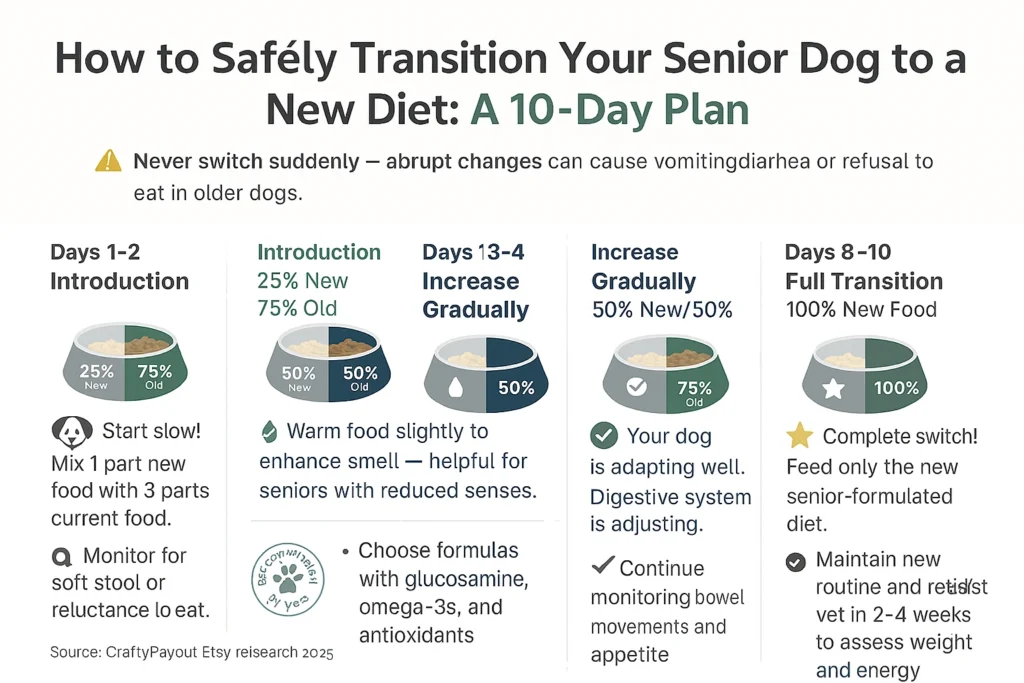
The Role of Treats and Supplements in Senior Dog Nutrition
Q: How should treats and supplements fit into a senior dog’s overall nutritional plan?
Dr. Mitchell: Treats and supplements play important but different roles in senior dog nutrition, and both require careful consideration to maintain optimal health.
Senior-Appropriate Treats: Treats should make up no more than 10% of your senior dog’s total daily calories, but they can serve multiple purposes beyond just rewards. Look for treats that provide functional benefits – dental chews for oral health, freeze-dried protein treats for additional nutrition, or treats specifically formulated with joint-supporting ingredients. For seniors with dental issues, softer treats or small training treats that don’t require extensive chewing are ideal.
Strategic Supplementation: While a high-quality senior diet should provide most nutritional needs, targeted supplementation can address specific aging concerns. Beyond the joint supplements we discussed earlier, I often recommend fish oil for cognitive function and coat health, probiotics for digestive support, and sometimes B-complex vitamins for dogs showing signs of decreased mental acuity.
Quality and Safety: When selecting supplements, look for products with third-party testing and clear labeling of active ingredients. The supplement industry for pets is less regulated than human supplements, so choosing reputable brands is crucial. Always introduce supplements one at a time so you can monitor for any adverse reactions.
Remember, more isn’t always better with supplements. Over-supplementation can create imbalances or interactions, which is why I always recommend working with your veterinarian to create a comprehensive nutritional plan.
Future Trends in Senior Dog Nutrition
Q: What emerging trends or research developments do you see shaping the future of senior dog nutrition?
Dr. Mitchell: The field of senior dog nutrition is rapidly evolving, with exciting developments that promise to improve the quality and length of our dogs’ lives.
Personalized Nutrition: We’re moving toward more individualized dietary recommendations based on genetic testing, microbiome analysis, and detailed health assessments. This approach recognizes that a one-size-fits-all diet may not be optimal for every senior dog.
Functional Ingredients: Beyond traditional nutrients, we’re seeing increased use of functional ingredients like turmeric for inflammation, coconut oil for cognitive support, and various plant-based compounds with antioxidant properties. Research is ongoing into how these ingredients can specifically benefit aging dogs.
Microbiome Research: Understanding the gut microbiome’s role in aging is opening new avenues for supporting senior dogs through targeted probiotics and prebiotics. We’re learning that a healthy gut microbiome is crucial for immune function, nutrient absorption, and even cognitive health.
Advanced Delivery Systems: New technologies are making it possible to deliver nutrients more effectively, such as microencapsulation to protect sensitive ingredients or slow-release formulations for better absorption.
For the most current research on companion animal nutrition, I regularly refer to resources like Tufts University’s Clinical Nutrition Service, which provides evidence-based information for both veterinarians and pet owners.
Conclusion: Nourishing Your Senior Companion
Proper senior dog nutrition is an investment in your companion’s quality of life and longevity. As Dr. Mitchell emphasizes, the key is recognizing that aging dogs have unique nutritional needs that differ significantly from their younger selves. By focusing on high-quality proteins, joint-supporting ingredients, appropriate caloric adjustments, and individualized care, we can help our senior dogs thrive in their golden years.
Remember, every dog is an individual, and what works for one senior may not be ideal for another. Regular veterinary checkups, careful observation of your dog’s changing needs, and willingness to adjust their nutrition plan as they age are the cornerstones of successful senior dog care.
Frequently Asked Questions About Senior Dog Nutrition
Q: Should I switch to senior food as soon as my dog reaches the “senior” age for their breed?
Not necessarily. Age is just one factor to consider. Look for functional changes like decreased activity, mild stiffness, or changes in coat quality. Some dogs benefit from senior nutrition earlier than expected, while healthy, active dogs might not need the switch until they show actual signs of aging. Consult with your veterinarian for personalized guidance.
Q: Can I make homemade senior dog food instead of buying commercial products?
While homemade diets can be beneficial, creating a nutritionally complete and balanced senior dog diet requires extensive knowledge of canine nutrition. If you’re interested in homemade feeding, work with a veterinary nutritionist to formulate recipes that meet all of your senior dog’s specific nutritional needs, including proper mineral ratios and vitamin supplementation.
Q: How do I know if my senior dog is getting enough nutrition?
Monitor your dog’s body condition score (your vet can teach you this), energy levels, coat quality, and overall demeanor. Regular blood work can also help identify nutritional deficiencies or excesses. A well-nourished senior dog should maintain stable weight, have a healthy coat, appropriate energy levels for their age, and show no signs of muscle wasting.
Q: Are grain-free diets better for senior dogs?
Not necessarily. Unless your dog has a specific grain allergy or sensitivity, grains can provide valuable nutrients and fiber. Recent FDA investigations have raised concerns about potential links between grain-free diets and heart disease in some dogs. Focus on overall food quality and ingredient digestibility rather than avoiding specific ingredient categories without medical justification.
Q: How often should I feed my senior dog?
Most senior dogs benefit from eating 2-3 smaller meals per day rather than one large meal. This approach aids digestion, helps maintain stable blood sugar levels, and can be easier on dogs with sensitive stomachs. Smaller, frequent meals can also help stimulate appetite in dogs who have become finicky eaters.
Q: What’s the most important single change I can make to help my aging dog?
If I had to choose one thing, it would be ensuring adequate high-quality protein intake while maintaining an appropriate body weight. Protein supports muscle maintenance, immune function, and overall vitality, while proper weight management reduces stress on joints and organs. These two factors together can significantly impact your senior dog’s quality of life and longevity.
This article provides general information about senior dog nutrition and should not replace professional veterinary advice. Always consult with your veterinarian before making significant changes to your dog’s diet, especially if your pet has existing health conditions.

